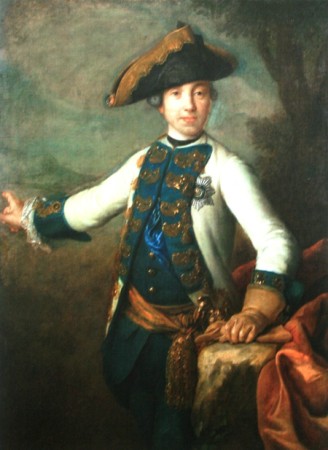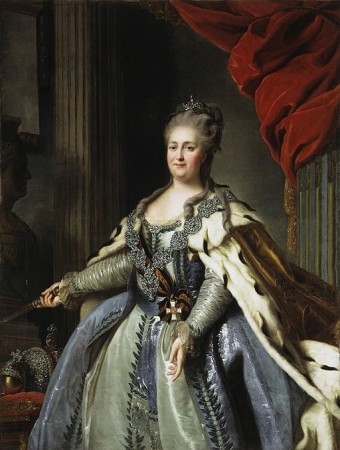In the course of my research for my next book, which is about poison, I did some reading about Catherine the Great. I’d come across a reference that mentioned that her violent, sulky, deeply reviled husband, Peter III, had been poisoned.
Turns out, he probably wasn’t, but the story of their marriage is still pretty fascinating.
Catherine (née Sophia) was a young German princess who married Peter III in 1745, when she was 16 years old. He was 17, the proclaimed heir to the Russian throne, and the nephew of the empress Elizabeth (who was the daughter of Peter the Great). He would eventually become emperor, but would reign for just six months.
Their wedding was delayed when he contracted smallpox. Where before he had been blandly inoffensive looking, the first look Catherine got of him after his illness revealed that his face was horribly disfigured–swollen and pitted with pockmarks. His head had been shaved and he was wearing an enormous wig. She reacted with horror, which didn’t go over very well with him. Their marriage was loveless. Although they slept in the same bed for nine years, he did nothing but play with his huge collection of toy soldiers on top of the covers. During the day he spent most of his time dressing his servants in Prussian uniforms (Prussia was Russia’s enemy at the time) and leading them through military drills, playing screechily on his violin, and training his dogs inside the royal bedroom, which became a smelly kennel. He also drank a lot. He grew increasingly hostile toward his wife, and publicly threatened to banish her (or kill her) so that he could marry his mistress. He managed to alienate most of the clergy, guards, and nobles.
Catherine had garnered a lot of sympathetic friends at the court. In 1762, she staged a coup to overthrow him. He was “persuaded” to abdicate and did so. Years later, Frederick the Great said, “He allowed himself to be dethroned like a child being sent to bed.” Ouch.
He was made a state prisoner and housed in a summer estate, but no one really knew what to do with the deposed emperor, who still remained a threat. Catherine probably didn’t overtly declare to her close advisors how convenient Peter’s death might be to her political survival, but they may have read her mind.
On July 17, 1762, several close associates of Catherine’s invited the prisoner to dine with them. Everyone drank heavily. Then, whether planned or because a quarrel broke out, they fell on Peter and tried to smother him with a mattress. When he broke free, they caught him and strangled him with a scarf. It may have been a drunken brawl, or a premeditated act.
Catherine, horrified if not completely surprised, declared that the death was a medical tragedy. She ordered the body dissected to check for traces of poison. None was found. The doctors declared he had died of natural causes, probably an acute hemorrhoidal attack.
Sources:
Massie, Robert K. Catherine the Great: Portrait of a Woman. Random House, 2011
Henri Troyat. Catherine the Great. Meridian, 1980

